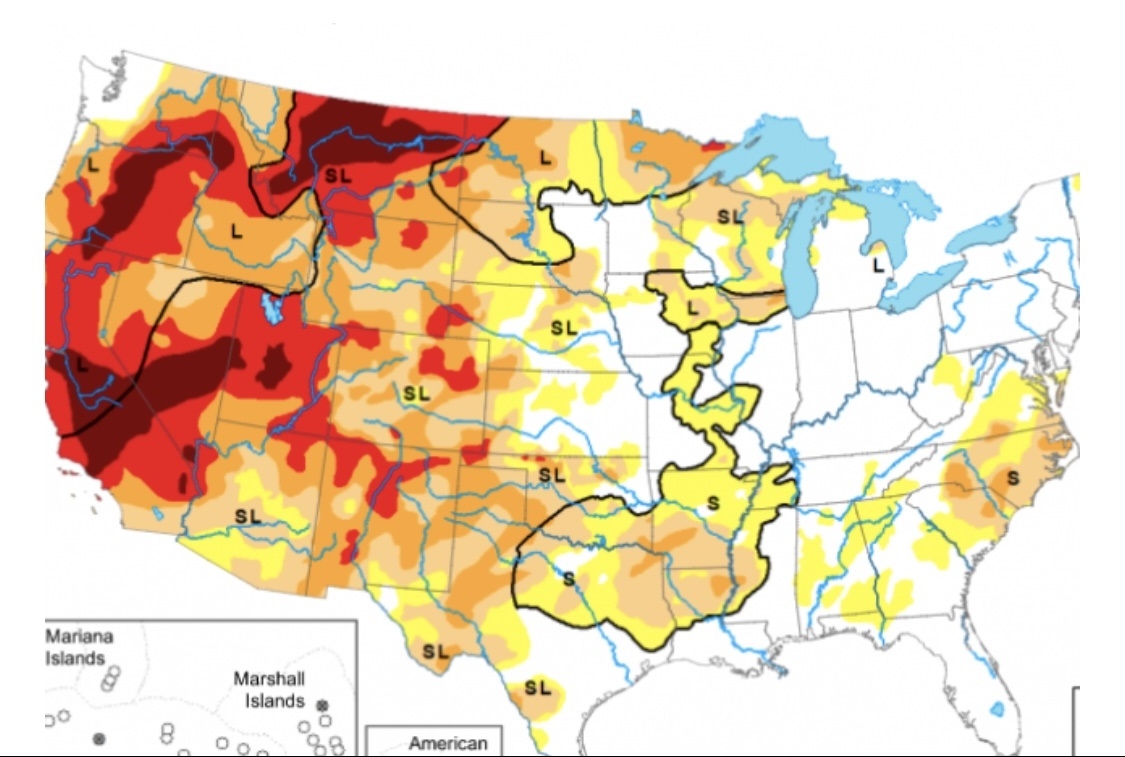The market is concerned about the increase in drought in the southwestern United States

The lack of precipitation in the winter wheat growing regions of Ukraine, Russia and the United States increases traders ' concerns about the fate of the future crop, which keeps world wheat prices at a high level.
In South America, the weather is favorable for the development of soybean and corn crops, but in the southern regions of Brazil and Argentina, more intense precipitation is expected.
In Australia, precipitation is decreasing, which allows us to step up the harvesting of a record harvest of wheat, barley and canola.
In the Black Sea region last week there were rains and snow, which replenished the moisture reserves in the winter wheat fields. In Ukraine, the amount of precipitation was 10-30 mm, but the temperature dropped to -2+ + 5 OhC, which stopped the growing season. Next week there will be a new wave of precipitation, and the temperature will rise above zero, and in the south-to 10-12 OhC, so the vegetation of plants will resume.
In Russia, in areas where winter wheat is grown in November, favorable agrometeorological conditions with precipitation of 20-60 mm and temperatures 4-6 degrees higher than normal improved the condition of crops and allowed them to germinate in late crops. Next week, the growing season of crops will continue against the background of warm weather with above-normal temperatures and additional precipitation. In the North-Western, Central and most of the Volga Districts, the height of snow cover reaches 1-10 CM, which will protect plants from frost, which, however, is not yet predicted.
According to the U Report.S. Daughter Monitor, in the United States, in areas of the southern and Central Rock Mountains, The Great Plains, and the lower and Middle Mississippi Valleys, drought continues to increase for 30 days. Last week there was little or no precipitation at all, and next week there will be light rains, which against the background of higher-than-normal temperatures will reduce soil moisture reserves and worsen the condition of crops. In the Midwest next week there will be heavy rains and snow, which will improve the condition of plants.
Until spring, the USDA will not publish weekly reports on the state of crops, so markets will rely only on data from weather forecasters.
In Argentina, precipitation will increase in the coming days, which will improve the condition of soybean and corn crops. Starting next week, dry weather will contribute to the development of crops, although it will reduce moisture reserves.
In central Brazil, where most soybeans are grown, heavy rainfall contributes to the development of soybean and corn crops. In the south of the country, there is much less rain, which negatively affects crops.
In Australia, light precipitation continued this week, which held back the harvest. However, precipitation will end next week, which will allow us to step up work.


